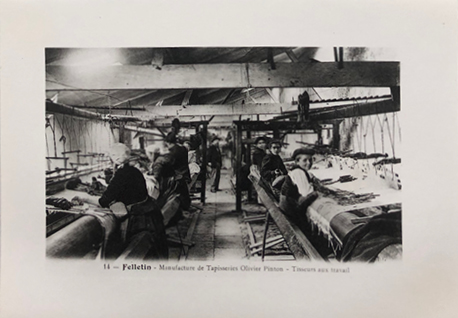
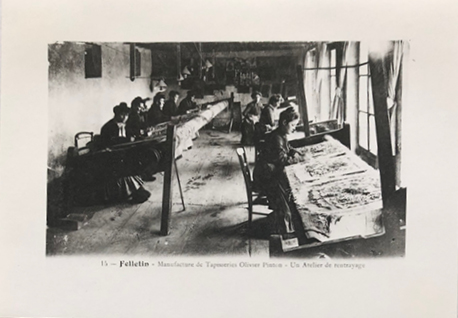
weavers at work and
a mending workroom, Felletin
Image © archives pinton
The first references to the name PINTON can be found in the Aubusson weaver censuses of the early XVIth century. However, the history of the PINTON family can only be traced back to the end of the XVIIIth century, one hundred years after Colbert granted the title of Royal Manufactory to Aubusson tapestry makers.
A family history, true to tradition and resolutely modern
The “first” Joseph
Born in 1770 in Aubusson, Joseph worked as different kinds of tapestry maker. He specialised in the fashionable textiles of his day, demonstrating entrepreneurial flair and an ability to capture the trends of his time. This quality will also be apparent in his descendants. His son, Mathieu, registered in the same censuses as tapestry or rug maker, married the daughter of another rug maker established in Felletin. With this union, the PINTON family wove a first link between Aubusson and Felletin.
Aubusson, Felletin, Paris
At the end of the XIXth century, two of the children born of this marriage, Joseph (the second) and his brother Olivier settled in Paris as rug traders and sales representatives for Maison Bournaret, a rug weaving manufactory based in Felletin, creating a second link with the town… And a first establishment in the capital.
The Wotowski-Bayard fund
Olivier’s wedding in 1892 was a milestone in the history of the PINTON family. His young bride was indeed the grand-daughter of Joseph Wotowski, who was born in the Polish nobility, settled in Aubusson and rapidly became one of the main dignitaries in town. With his son in law he created the Bayard Wotowski manufactory whose documentary fund and customer base fell to the PINTON family through this union.
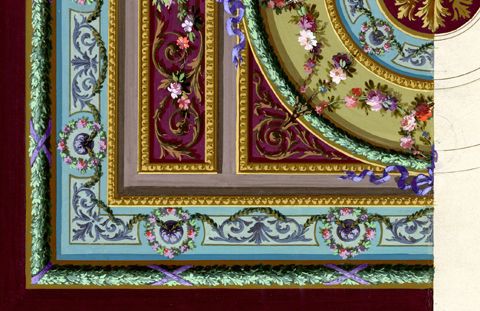
original drawing
gouache on paper
image © archives PINTON
From brothers to brothers
On the death of Olivier, his sons Jean and Louis took over – one in Paris as trader and the other in Felletin as head of the family business. While their initial productions were reproductions of old patterns, they progressively began to weave pieces designed by contemporary artists. Bright and driven, the brothers developed this activity through their exclusive partnership with Jacques Adnet, a talented architect, designer and art publisher of the day. It is also around that time that Jean bought the Bournaret manufactory, which resulted in the arrival of more cartoon painters.
After WWI: the tapestry revival
Driven by the impulsion given by Jean Lurçat, who brought with him exceptional artists, the Aubusson tapestry gained new momentum. The painter relocated to Aubusson in 1938 in the aim of reviving tapestry. He developed the technique of numbered cartoons: the subject is drawn in real size, colours are indicated by numbers and the palette is reduced, “Everyone was winning: the artist in terms of 100% faithfulness of execution, the workshop in terms of weaving speed” wrote the artist in “Le Bestiaire dans la tapisserie du Moyen-Âge”.
… Boosted by this development the art rug made a comeback, and the PINTON manufactory ended up weaving artworks by Calder, Le Corbusier, Fernand Léger and many others!
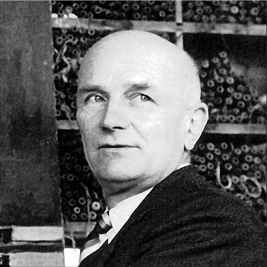
The “Second” Olivier
Encouraged by the renewed growth of his business, Jean PINTON diversified the firm’s offering and created departments dedicated to fitted carpets, tufted rugs as well as a laying and advisory service. Olivier PINTON, his son, who took over in 1967, had new modern premises built, designed by architect Jean Willerval.
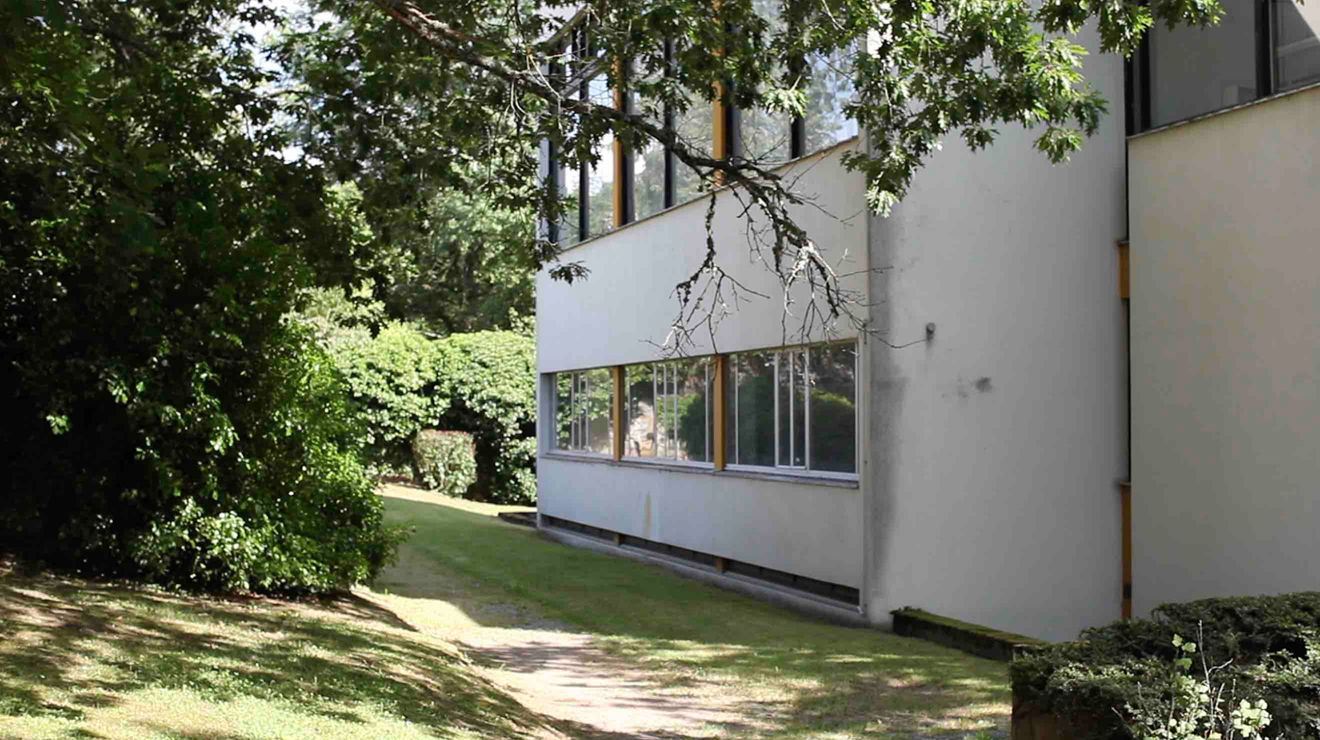
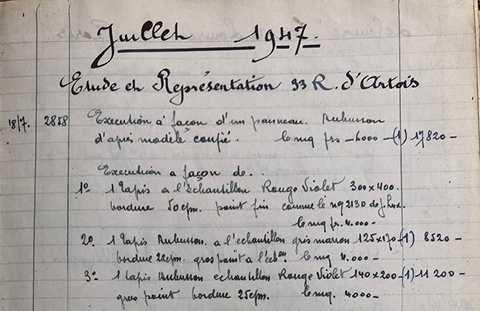
from the sales report
Felletin, 1947
image © archives PINTON
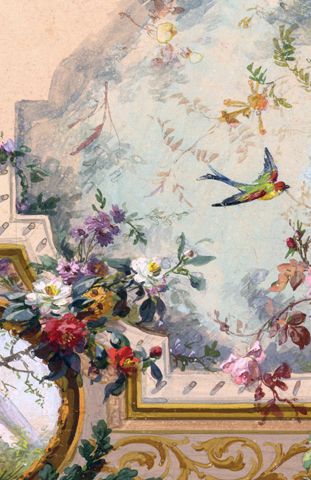
original drawing
gouache on paper
image © archives PINTON
PINTON Today
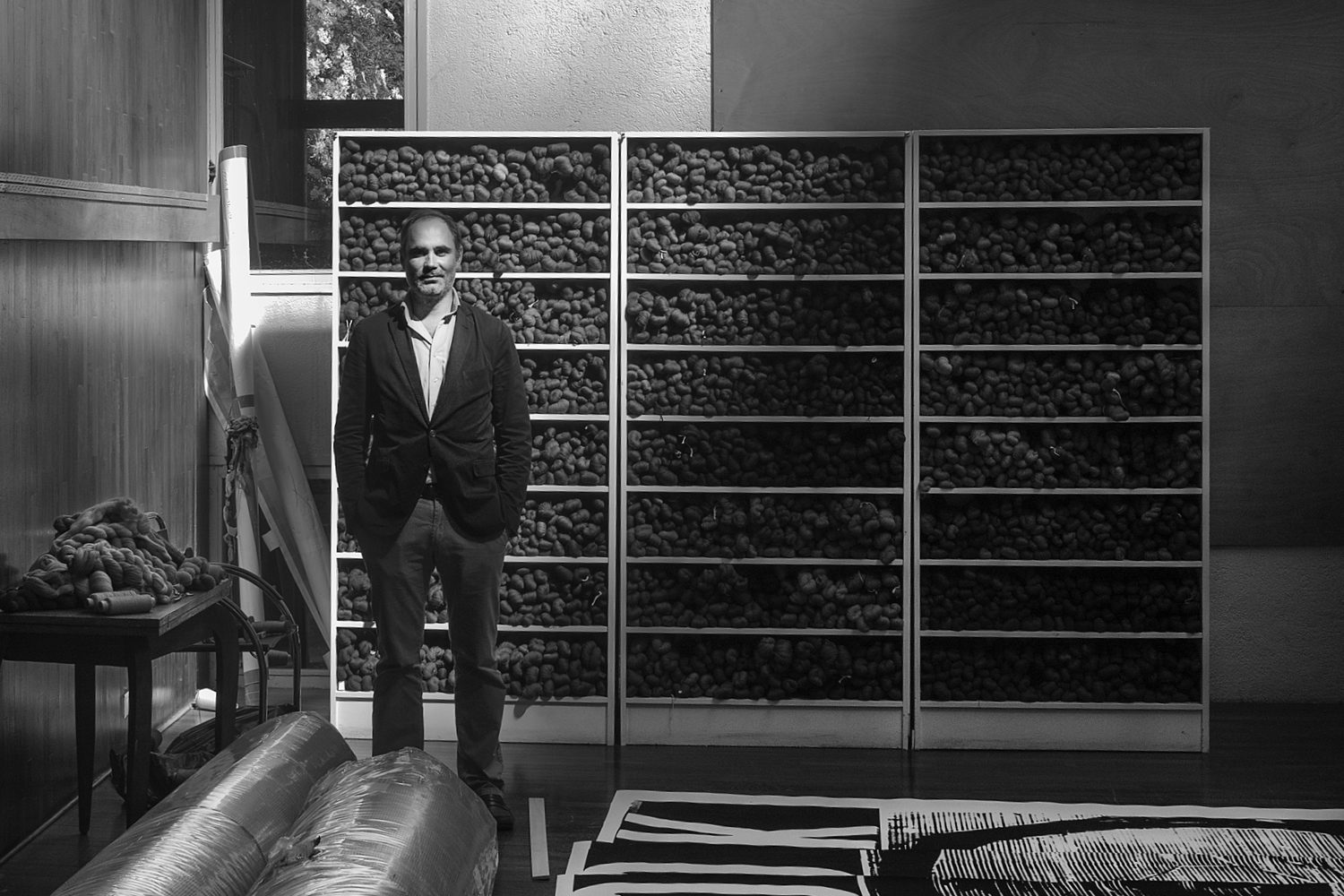
In 2002, Lucas PINTON was just 23 years old when his father, François, suggested that he took the head of the family manufactory, close to bankruptcy at that time. He then left Paris, where he was completing his economics studies in the university of Assas to dedicate himself to the rebirth of Maison PINTON. With a childhood spent in the Paris suburbs, away from the workshops of the Creuse, he was not necessarily predestined for this task, but claimed an subconscious link to the Felletin business. He uncovered photos and letters dating back to the time when the manufactory produced the works of Sonia Delaunay, Le Corbusier, Fernand Léger and many others, and decided to reconnect with the unique and visionary heritage of PINTON. Driven by his entrepreneurial flair and his love of art, Lucas PINTON launched many initiatives. Maison PINTON resumed its collaborations with major contemporary artists and renowned designers for its limited edition art rugs and tapestries. The range of fitted carpets, bespoke products or ready-made rugs in standard sizes was not forgotten and became available in a wide choice of material, author and colour options…
Lucas PINTON swept the cobwebs from the old-fashioned image of Aubusson tapestries and rugs, anchoring them in the modern world of today. He also expanded the service offering and worked with specific markets such as the yachting and aviation industries, luxury boutiques and hotels, or the institutional world of ministries and embassies, creating an international brand image. Further supported by the Entreprise du Patrimoine Vivant (Living Heritage Company) label and the Aubusson Rug and Aubusson Tapestry Geographical Indications, the PINTON manufactory has become THE reference in its field. Yet it remains above all a family business, led by men and women who share the same passion for their trade and the same desire to transfer and share their skills. In spite of these many successes, Lucas PINTON remains humble and curious, driven by many projects, enthusiastic about new partnerships… Enough to continuously reinvent the family business!
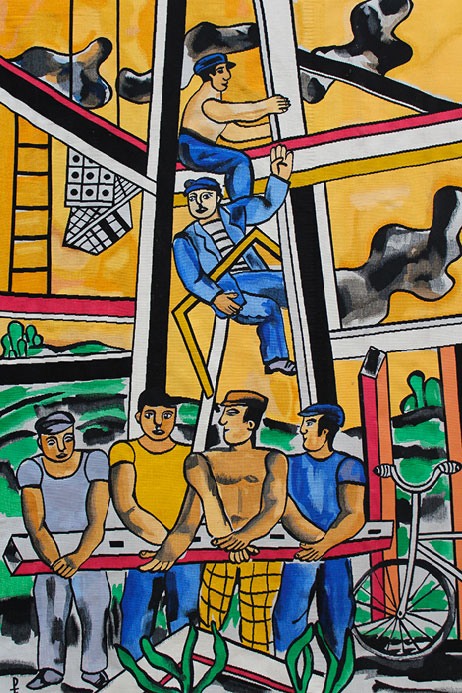
Les constructeurs jaunes
240×170 cm, edition N°1/6
tapestry after original drawing
by artist Fernand Léger
At PINTON, the word “know-how” is not brandished in vain or misused. Techniques are mastered, men and women are sensitive and passionate, particular attention is paid to the origin of materials as well as to the materials themselves, the transfer of skills and knowledge is valued – all contributing to the expertise of the firm.
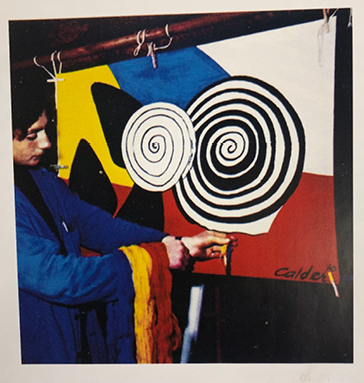
Jacques Bourdeix, cartoon painter and dyer,
and a tapestry by Alexandre Calder.
Cartoon painters and colours
Bent over his or her careful composition and giving it his or her full attention, the cartoon painter transposes the design created by the artist onto a cartoon to the dimensions of the tapestry, reversing left and right. Treading the line between art and craft, the cartoon is the translation of the painting into a future tapestry, like a pattern. It also serves to select the colours that will be used by the weaver: numbered and transferred to the cartoon, they are chosen by the cartoon painter who strives to remain as true as possible to the artwork. This makes up the rosary or chapelet, a sample of the different hues needed, gathered in small skeins knotted together. This work is essential to give all its impact to the tapestry. “To create a beautiful red, we blend different shades of red and we then have a colour that is moving, vibrant, alive”, explains Jacques Bourdei, cartoon painter at PINTON for over fifty years. Placed behind the warp threads and pinned in place, the cartoon guides the weaver in his or her work. The Maison PINTON archive contains over 4,000 original cartoons of rugs that can be reproduced on request.
“What I like most in my job is the research in colours and the transcription onto a cartoon. The transfer, or in other words, the “thread” interpretation of a painting or a photograph was the most significant aspect. I am truly happy to have had the opportunity to meet so many artists throughout my career.”

Picasso and his tapestry « Les Clowns », with Pierre Baudoin.
image © galerie Antonio Verolino
Maison PINTON – a master in the art of the aubusson tapestry
Aubusson tapestries: an age old tradition
Aubusson tapestries are produced on a horizontal low warp loom or métier de basse lisse. The weaver or lissier works the tapestry on the warp face, passing the weft threads through with a bobbin or flûte and covering the warp threads. Prior to that, the design to be woven was drawn by the artist and reproduced on a cartoon. The weaver, working closely with the artist and with the help of the cartoon painter, strives to select the best colours, materials and weaving variations to transpose the art faithfully. Using his or her precise and expert turn of hand, which has remained unchanged for nearly six centuries, the craftsperson puts his or her feelings and skill to the service of the artist working in symbiosis with the artwork. Emotion reaches a climax when the piece falls off the loom, which is known as tombée de métier, when at last they discover together the result of this careful and patient work: the whole tapestry, the right face up.
Aubusson rugs: techniques and materials
Intrinsically linked to the history of the Aubusson Tapestry, Aubusson rugs can be woven entirely by hand with using knotted stitches or points noués on a vertical high-warp loom or métier de haute lisse. They can also be woven on a low-warp loom, producing a flat weave rug or tapis ras because, unlike a knotted rug, there are no knots to create pile. Finally, Aubusson rugs can be tufted. This technique is more recent: the canvas is stretched over the frame and the pattern is transferred by hand. Threads are inserted manually, one by one, using a gun on the back of the canvas. These various processes require expertise, mastered skills and a deep knowledge of materials. Making a rug may involve using rough materials, some more difficult to handle than others. It may also require setting inserts or combining materials…
Knowledge sharing to perpetuate the art of doing well
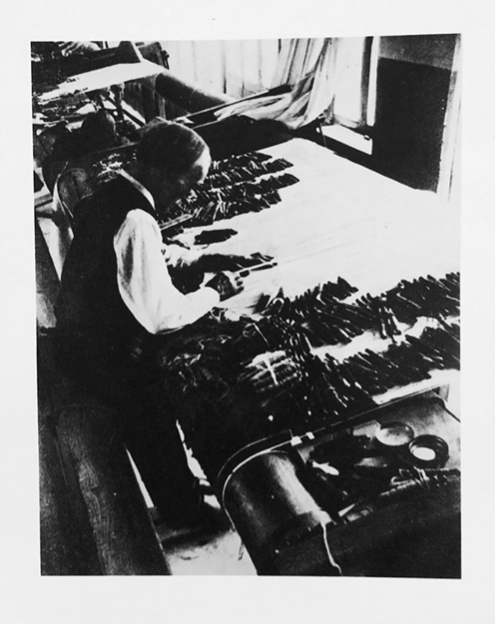
Since the creation of the business, our highly qualified craftspeople have been committed to sharing their knowledge. Maison PINTON encourages the transfer of skills and the awakening of vocations by organising visits of the manufactory and setting up partnerships with art students – some even come to train at PINTON. Other students are apprenticed following a career change. Acquiring the skills needed to create low-warp tapestries requires four years of training. Some of our previous apprentices have remained in our workshops and today are training the craftspeople of tomorrow!
Cartoon designer: an outstanding job
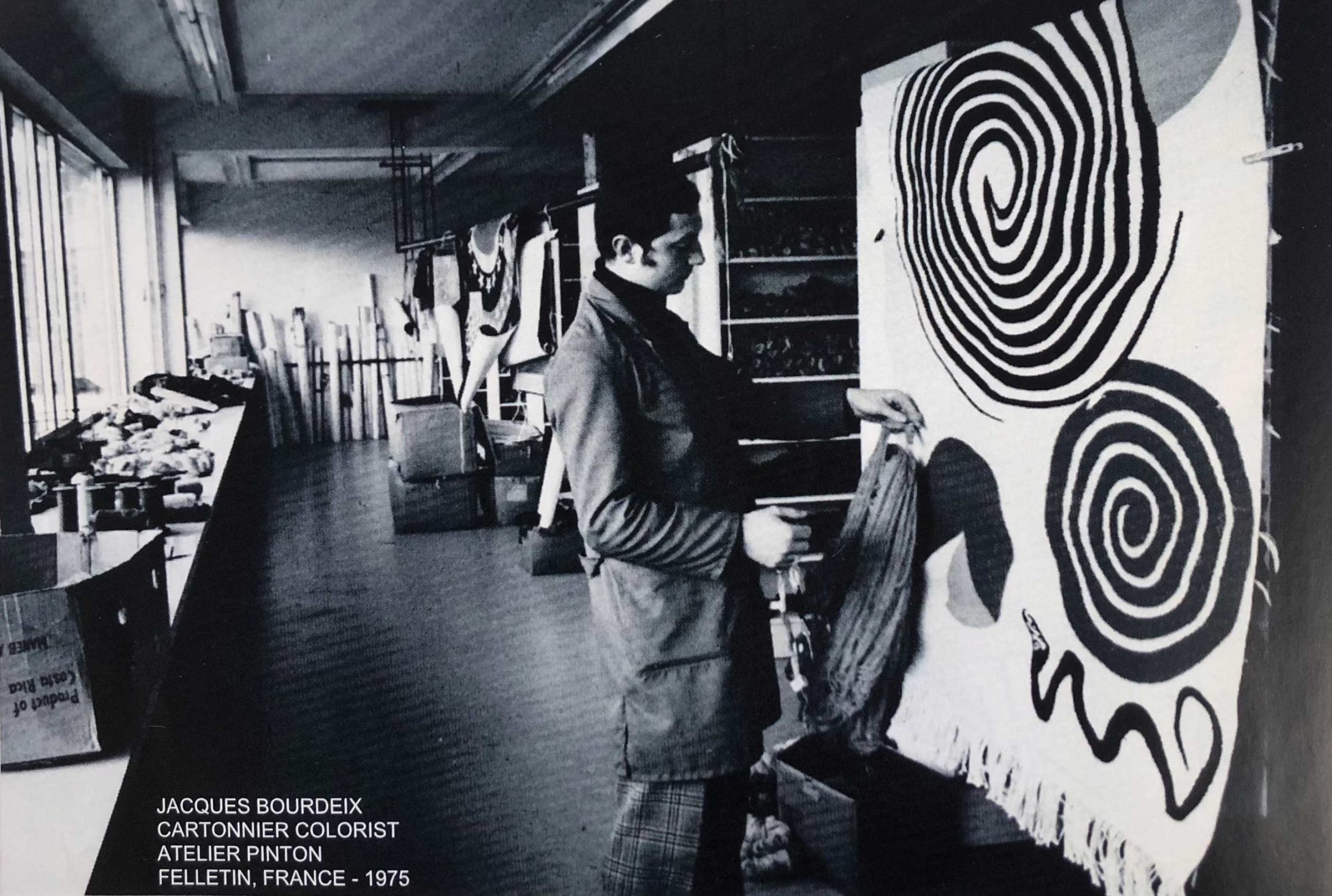
In the manufacturing process of a tapestry, the cartoon designer holds a pivotal role. His talent and know-how are essential in order to guarantee a successful interpretation of the drawing by the weavers. The provided tapestry cartoon connects the artist to the weavers and will be used as a pattern throughout the weaving. The cartoonist actually replicates the work of art created by the artist, and at the scale wanted for the tapestry. Furthermore, the work is replicated backwards because the cartoon is to be slipped beneath the warp threads of the loom. Some artists will design their own tapestry cartoons. For instance, in 1936, commissioned by collector Marie Cuttoli, Le Corbusier created his first tapestry cartoon for one of his pieces. Following that, he designed over thirty cartoons, many of which have been woven by PINTON.
At PINTON’s the craftsmanship for cartoon design is not taught but more passed on. Jacques Bourdeix, cartoon designer and colorist for PINTON since 1970, is one of the most prominent figures in the profession. In the year 2000 he received the title of Chevalier des Arts et des Lettres and shares his know-how and expertise gathered over years of collaboration with Alexander Calder, Etel Adnan, Fernando Botero and many others…
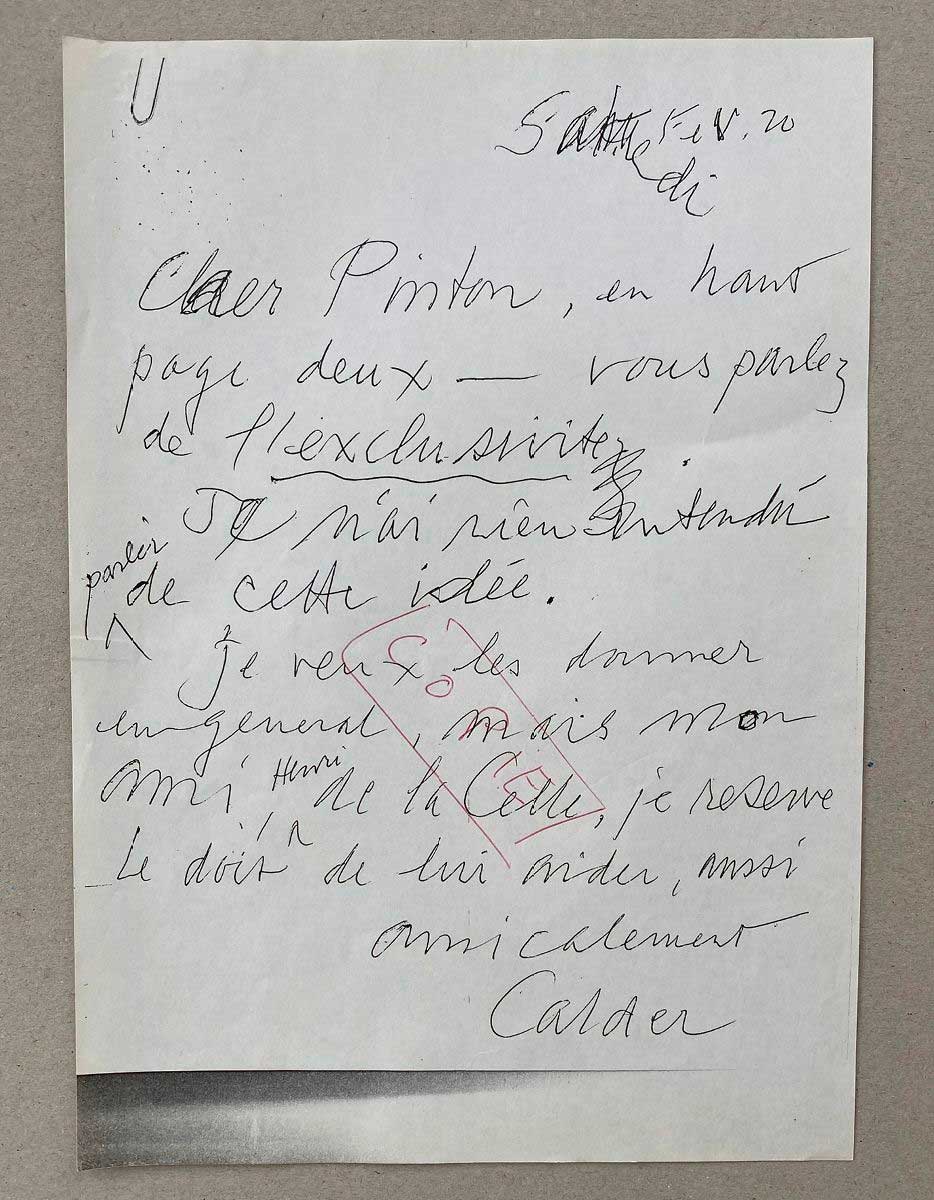
A letter from Calder to the Pinton Mill
image © archives PINTON
